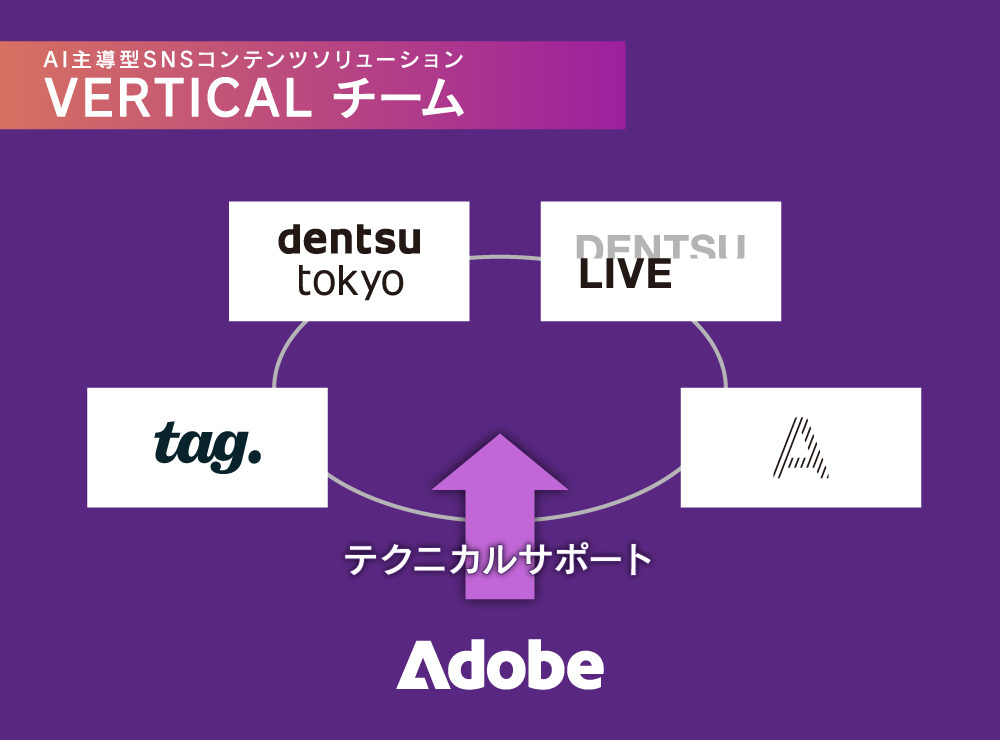An initiative has begun that actively utilizes AI across every stage of short video campaigns, from competitor analysis and content creation to post-performance analysis.
Its name: the AI-driven SNS marketing solution "VERTICAL." This is a consortium-based project involving multiple companies, including Dentsu Inc. and Dentsu Live Inc.
Members from Dentsu Inc., Dentsu Live Inc., Adobe, and A Inc. (Ace), all participating in "VERTICAL," gathered to discuss the solution's outlook.
This second part delves into the details of VERTICAL's three key steps.
- Global Market Analysis
- Content creation
- Result Analysis
We're introducing AI into these three simple steps.
Regarding each company's role: ① Data analysis specialists × AI; ② Creators × video generation AI; ③ A team capable of creating a chemical reaction with the data analysis team × AI. We will collaborate to advance this rapidly. By pooling each company's assets and technology, we aim to realize SNS marketing that builds global brand support.
However, in the Toyota case studies introduced previously and this time, AI was only introduced at Phase ②. Phases ① and ③ were executed manually.
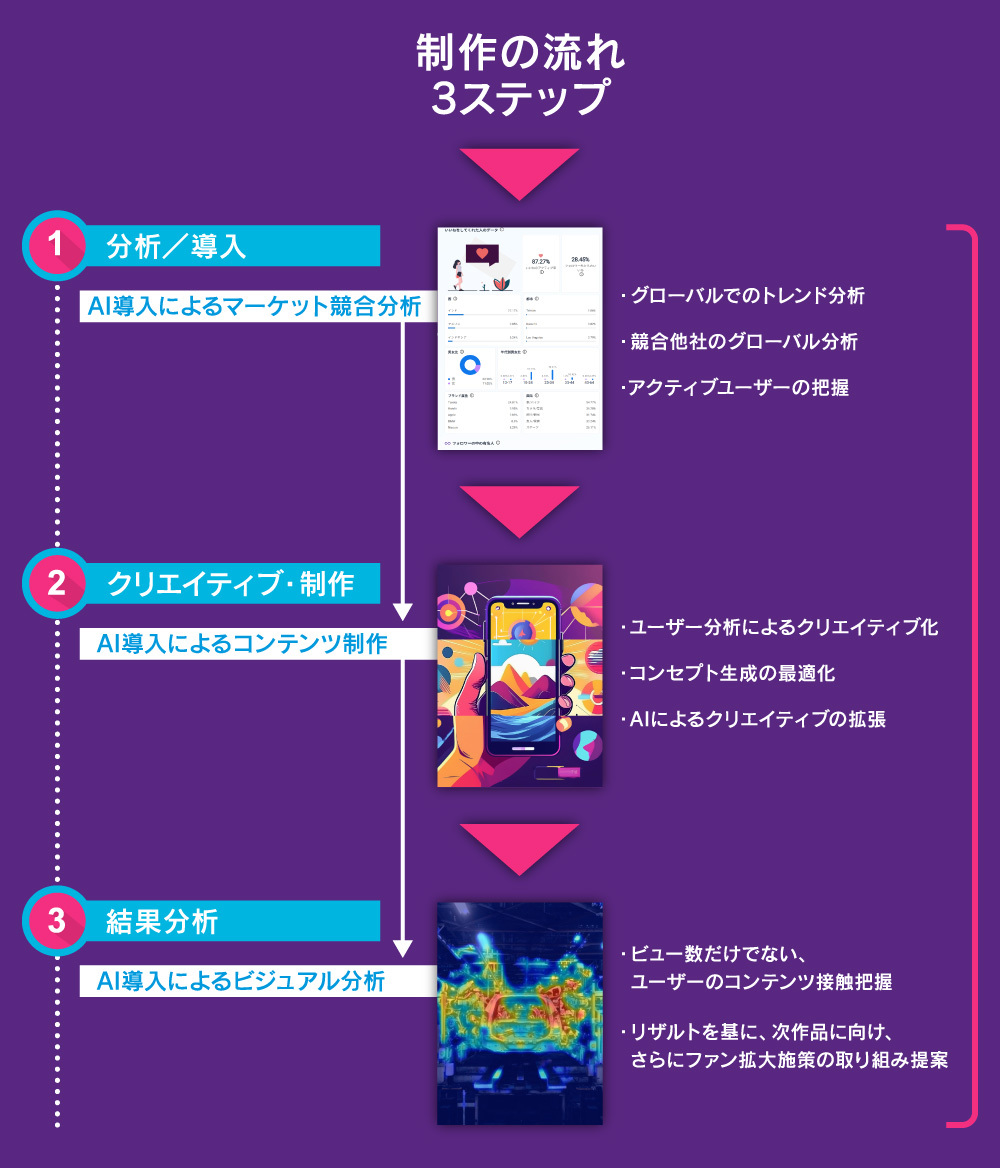
Step ①: AI performs psychographic analysis of followers
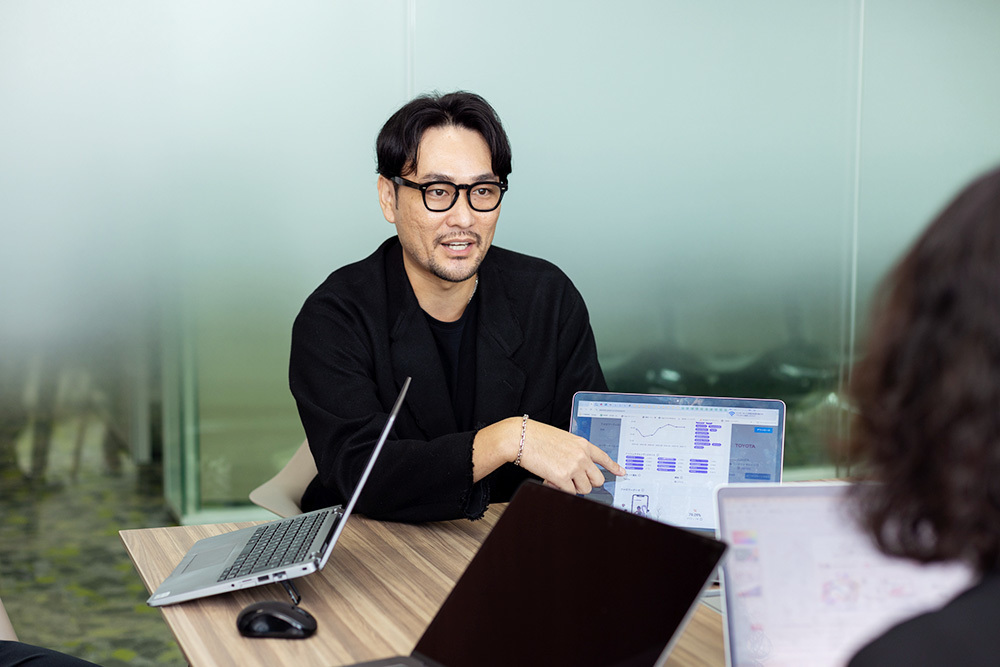
Mr. Dejima, A Inc.
──This time, we'll discuss the case of Toyota. First, what are the key points of "① Market Competitor Analysis"?
Maezawa: We utilize AI to conduct detailed analysis not only of Toyota but also of followers across various industries. Here, we leverage A Inc.'s solution called "Astream."
Dejima: "Astream" is Japan's first SNS marketing tool to achieve psychographic (psychological attribute) analysis. The tool has accumulated data from over 1.7 million accounts across Instagram, YouTube, TikTok, and X.
──What kind of analysis do you perform for "VERTICAL"?
Dejima: With conventional analysis, the brand attributes based on the interests of users following Toyota's official account would only yield something like "Toyota/Automobiles/Motorcycles." Beyond that, it's demographic information like residential area and age distribution. But this alone is insufficient for analysis. Therefore, this time we're using AI to analyze the trends of Toyota's followers and accounts that engaged with the content in much greater detail.
This reveals that users' brand attributes extend beyond Toyota alone. We see analysis of the broader mobility industry, or even brands outside the automotive sector like the IT industry. Furthermore, for influencers with large followings, we analyze the interests and preferences of "the influencer's own followers."
Dejima: Until now, the standard approach to social media marketing was to engage with a fairly fixed tone and worldview. Going forward, by using AI to deepen our analysis, we can see details for each piece of content. For example, "Users interested in this creative are primarily men in their 30s and 40s who are interested in robots." This allows us to understand whether the audience viewing the content matches the "target audience we aimed for" or not.
Furthermore, by analyzing global mobility industry trends and trending content creatives with AI, we can even discern the hobbies and preferences of those interested in these topics. With that level of analysis, we can see the direction needed to acquire followers from such demographics, such as " "
Step 2: AI generates videos featuring specific products
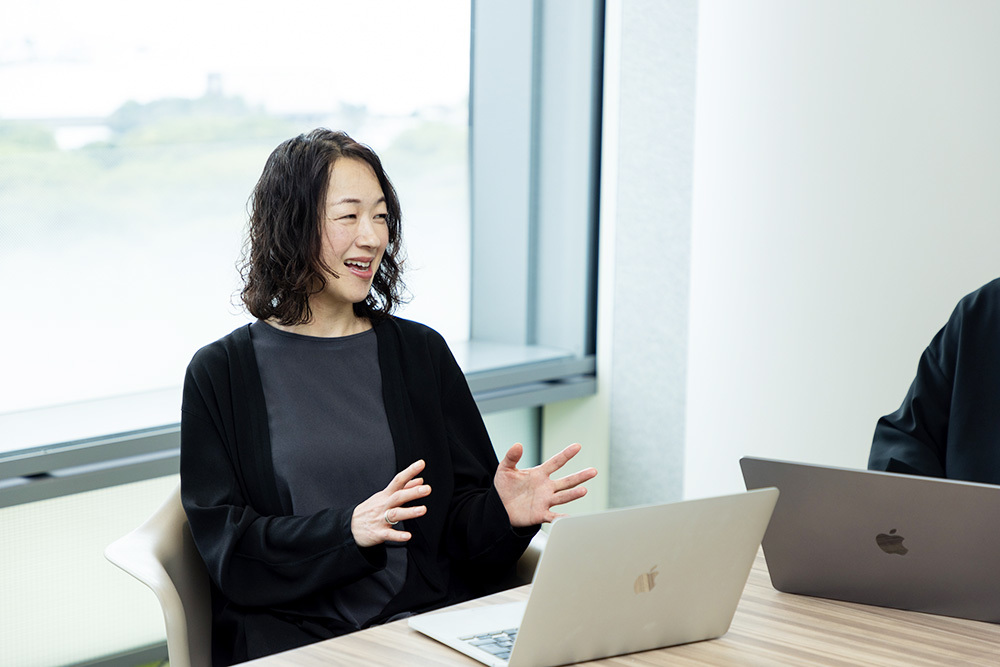
Adobe's Mr. Uno
──What is AI's role in "② Content Creation"?
Maezawa: It enables various things: creative leaps beyond human imagination in conceptualizing and visual design; rapid creation of still images and videos simply by providing text prompts; and incorporating scenes difficult to shoot into content.
──So it's not just about "letting AI handle repetitive tasks so humans can focus on creativity," as you mentioned earlier. It also offers benefits for the creative process itself.
Maezawa: In the first part, I mentioned that SNS content needs that "What is this!?" factor. I believe "What is this!?" represents a "positive kind of uncertainty." AI possesses unexpected unpredictability, generating leaps of ideas humans wouldn't conceive. Inside the AI, it keeps churning thoughts, creating utterly bizarre things or producing humorous outcomes that aren't quite spot-on. In a sense, it's a series of failures, yet it keeps learning incrementally, improving bit by bit—a process that somehow resembles human growth.
Uno: Of course, generative AI output isn't 100% creative. Humans ultimately judge any content. That said, as Mr. Maezawa mentioned, AI enables many possibilities.
For example, using Adobe Firefly, you can generate creative ideas with an AI-driven approach, aiding ideation. Furthermore, by applying Firefly's API technology, you can take a single image prepared by a human and quickly create tens of thousands of new images by changing the angle or automatically cropping and altering the background.
Iyoda: Firefly doesn't just generate still images; it can also "extend" video and audio footage shot by humans, right?
Uno: Yes, that's the "Generative Extend" feature we introduced in Adobe Premiere Pro. AI can generate "continuations" of human-shot video footage to extend its length or add variations to its progression. This can be done later, just using a PC, without needing additional filming or recording. For example, if you feel a scene of pouring wine into a glass is a bit short, the AI can naturally add movements before and after the pouring.
Iyoda: Being able to "extend" the length of shot footage is groundbreaking, and it seems like there are many potential use cases. Also, Firefly is making significant strides in the video generation space, right?
Uno: Although not yet launched, we announced the "Firefly Video Model," which can create videos from prompts or still images. This will make it easy to create fantastical videos that are difficult to shoot, as well as rich, immersive videos. It also seems promising for realistically recreating old photographs as videos.
──That should reduce production time and lower filming costs. By the way, could a client, for example, generate an exact replica of their own product?
Uno: It is possible to train Firefly on specific products. Currently, using still images, it can create content aligned with a brand's identity.
──Regarding generative AI, fake images and copyright infringement are major concerns. What measures are in place for this?
Uno: There are several approaches. One example is the Content Authenticity Initiative, which Adobe leads as a member. It aims to enable trustworthy content creation and use by recording the provenance of digital content. Currently, over 3,700 companies and organizations, including Dentsu Inc., have joined.
──Even with generative AI's advancements, creating precisely targeted content that meets client expectations still requires the skill to provide accurate prompts, right?
Maezawa: In that regard, professionals with extensive experience in graphics and video can utilize generative AI most effectively and benefit the most. Those with video backgrounds already possess the skills to draw storyboards, making them exceptionally adept at writing prompts. Being able to express concepts with highly specific and detailed prompts—like "using a 50mm lens" or "with a dolly shot"—is a major advantage when using generative AI.
Iyoda: Adjectives and adverbs are incredibly important in text prompts. Large Language Models (LLMs) are gradually learning what terms like "softly" or "slippery," used by visual creators, actually mean. As the fusion between AI and creators progresses, we should be able to create visuals that more closely match what we envision.
Step 3: AI Analyzes Content Engagement in Detail!
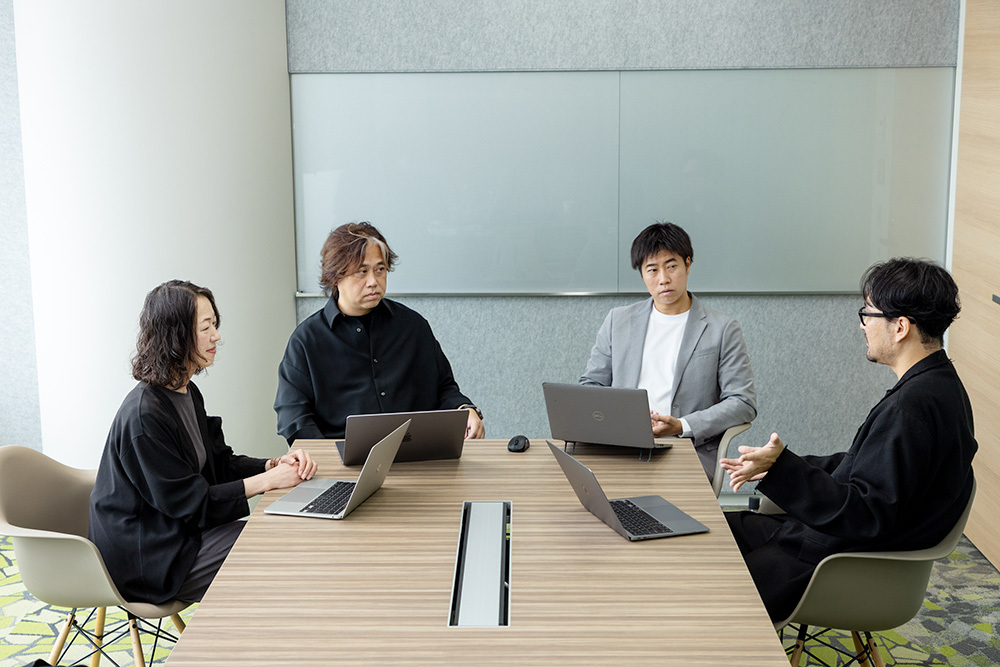
──What exactly does the final step, "③ Result Analysis," entail?
Iyoda:As mentioned in the first part, we utilize Tag Corporation's heatmap analysis tool. Specifically, it visualizes users' eye movements when interacting with vertical social media content. This reveals what aspects of the content capture users' interest and how intently they are viewing it.

An example of content analysis using Tag Inc.'s heatmap analysis screen. Red indicates areas of high gaze concentration; content with continuous red coverage across the center of the screen is considered high-performing.
Maezawa: As mentioned in the first part, user analysis on social media can no longer be measured solely by simple metrics like likes or views. From the perspective of gaining global fans, being able to see the engagement for each piece of posted content and analyze user trends in detail is incredibly valuable. It allows us to strategize and prepare for the future content we create next.
──VERTICAL is just getting started, but we look forward to its future evolution.
Dejima: AI utilization in social media marketing will only continue to advance. Actually, we're currently experimenting with something at A Inc. For example, in the fashion domain, we're training AI to match images with keywords for each post, like "This is XX-style fashion." As this accuracy improves, we could potentially show influencers' outfits and have the AI suggest, "This person is XX-style, so posts like this would be highly compatible."
Uno: Video has become by far the most powerful medium in marketing. At Firefly, we're preparing the world's first "commercially viable video AI." I believe this will also become available for use within our "VERTICAL" solution. Finally, I'd like to emphasize that Adobe is a company that has walked alongside creators. Rather than standalone AI solutions, we're committed to integrating AI-powered support into our tools that creators have been using for years.
Maezawa: For Dentsu Live Inc., we aim to further leverage AI technology to analyze the relationship between posts and users across all industries, thereby boosting global branding on social media. As the VERTICAL 2.0 phase begins in early 2025, we plan to expand both this solution and our team.
Iyoda: What was fascinating while working on Toyota's short videos was how engagement skyrocketed for videos themed around "factories" or "robots." We'll continue exploring how to combine brand assets with AI. For Toyota specifically, we aim to use AI to analyze markets and cultivate new global fanbases, such as women and Gen Z.
──Thank you for your time today!









